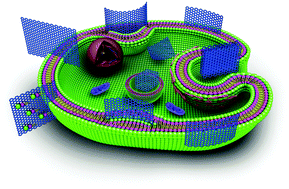Physical principles of graphene cellular interactions: computational and theoretical accounts
Abstract
As a class of two-dimensional (2D) nanomaterials, graphene and its derivatives have aroused tremendous interest in materials chemistry research ranging from synthesis, property characterization to technological application. In particular, the use of these nanomaterials in biomedicine has been steadily growing, which at the same time ignites great concern on their potential cytotoxicity and impacts on health and the environment. A thorough understanding and thereby controlling of the cellular interactions of graphene-based nanomaterials (GBNs) is critical for the development of guidelines for safer biomedical applications and for the management of graphene related health and environmental issues. This review article highlights the most recent advances in investigating physiochemical mechanisms of cellular interactions of GBNs, focusing on the approaches of tailored computer simulations and theoretical analysis. We review how the energies and forces govern the states and kinetic pathways of these interactions and depend on the physical and chemical characteristics of GBNs as well as the components and biomechanical properties of the cell membrane. In addition, we discuss the relation of the simulation and theoretical results to some important experimental findings towards the mechanisms of cytotoxicity and antibacterial activity of GBNs. This review concludes with a discussion on the challenges facing the field, and future directions from the perspective of computational and theoretical methodologies.

- This article is part of the themed collections: Recent Review Articles and Journal of Materials Chemistry B Emerging Investigators


 Please wait while we load your content...
Please wait while we load your content...